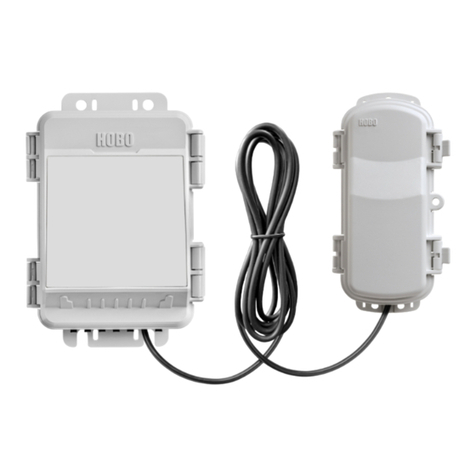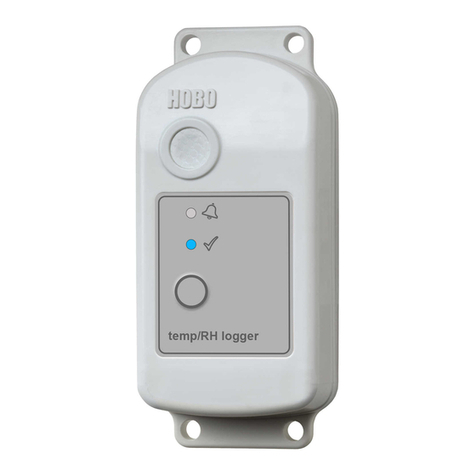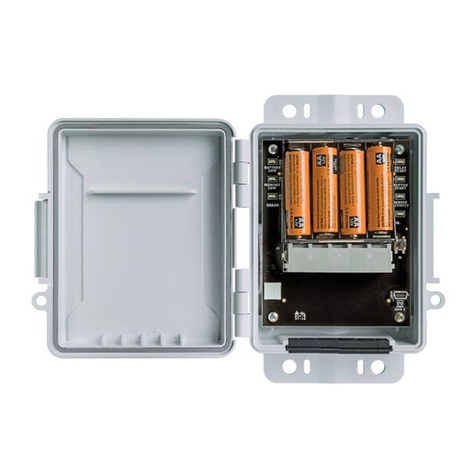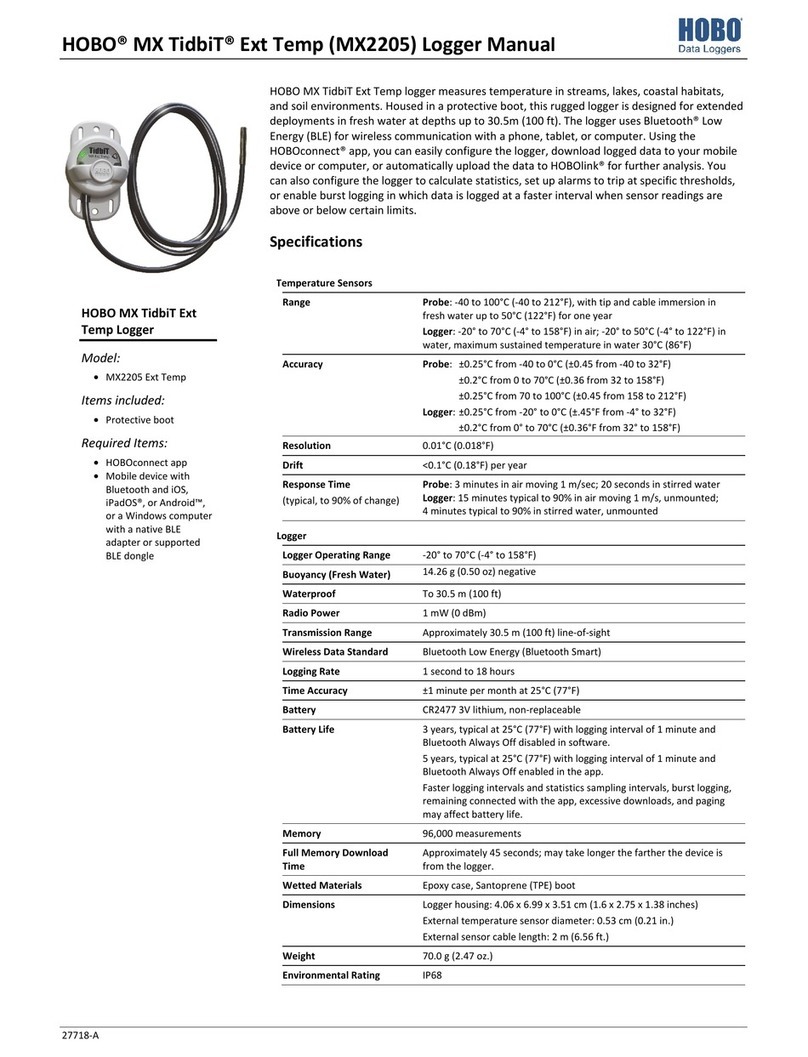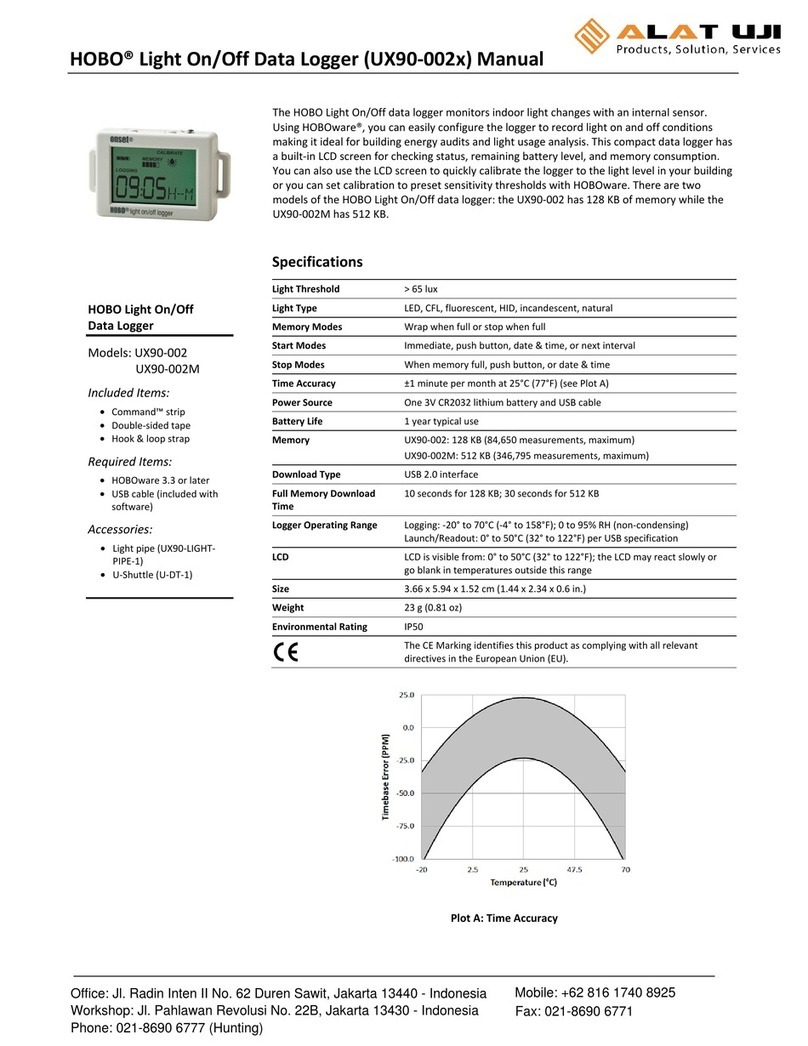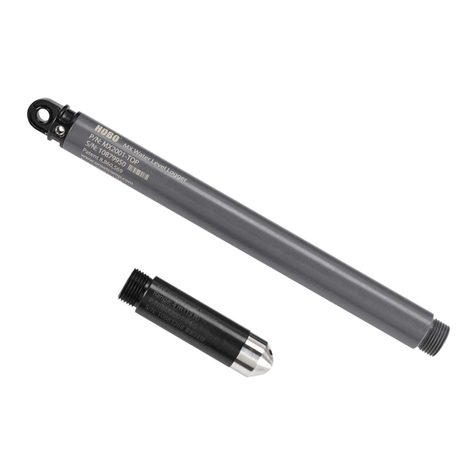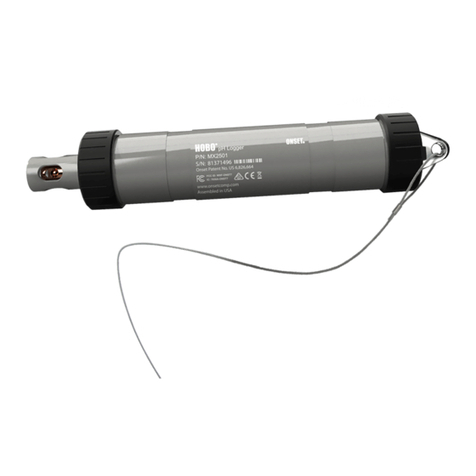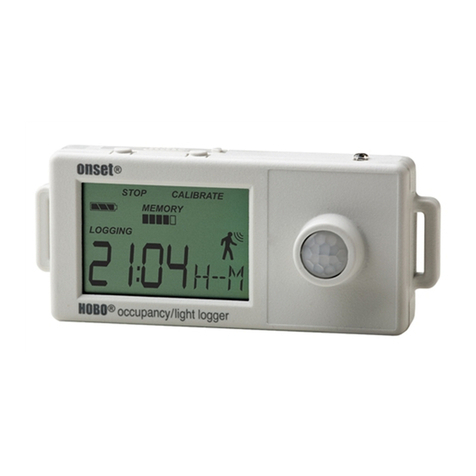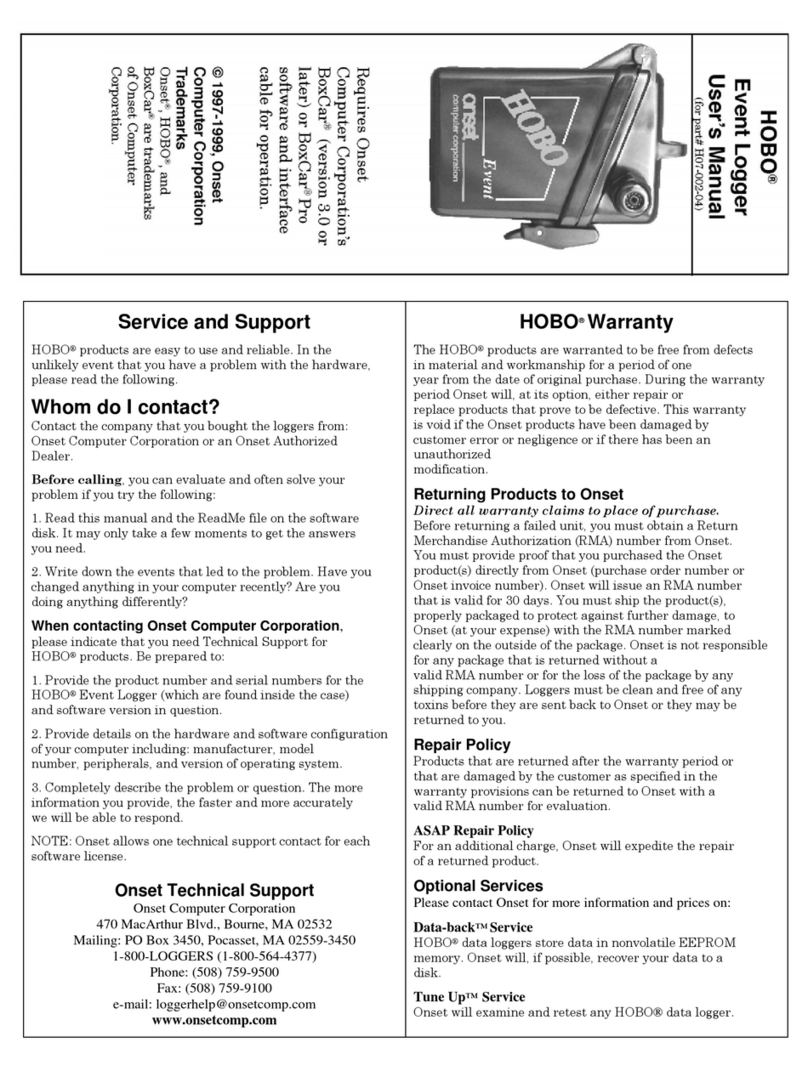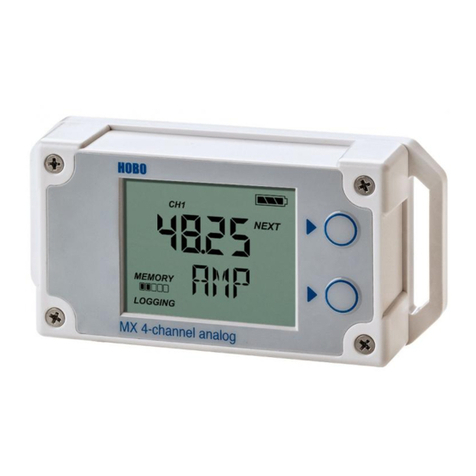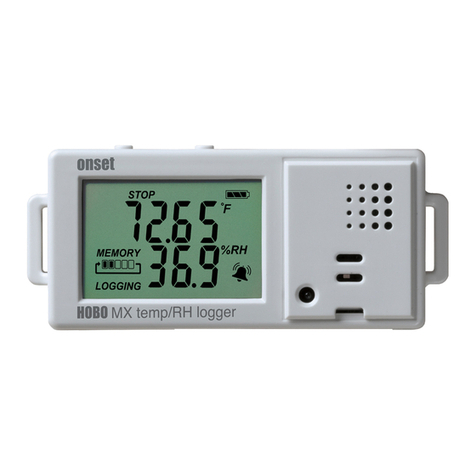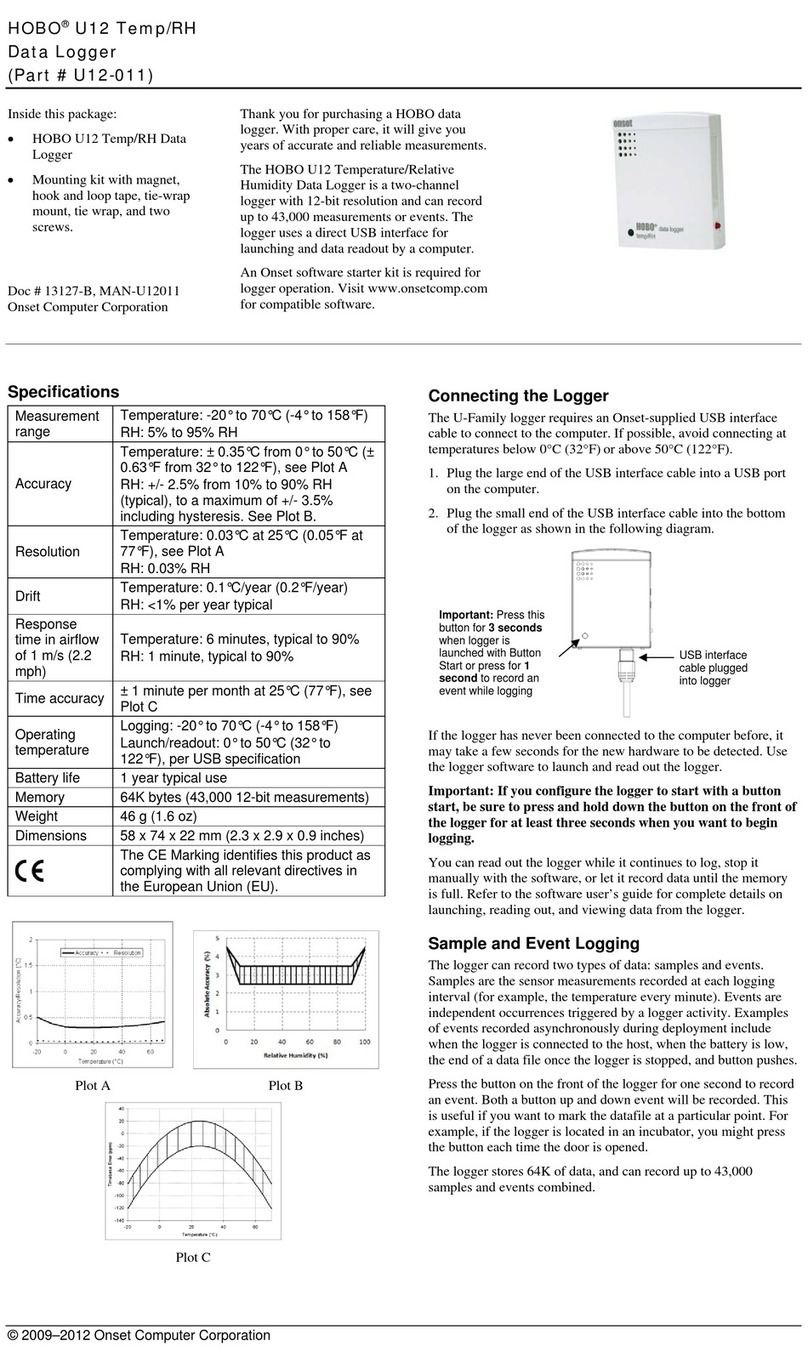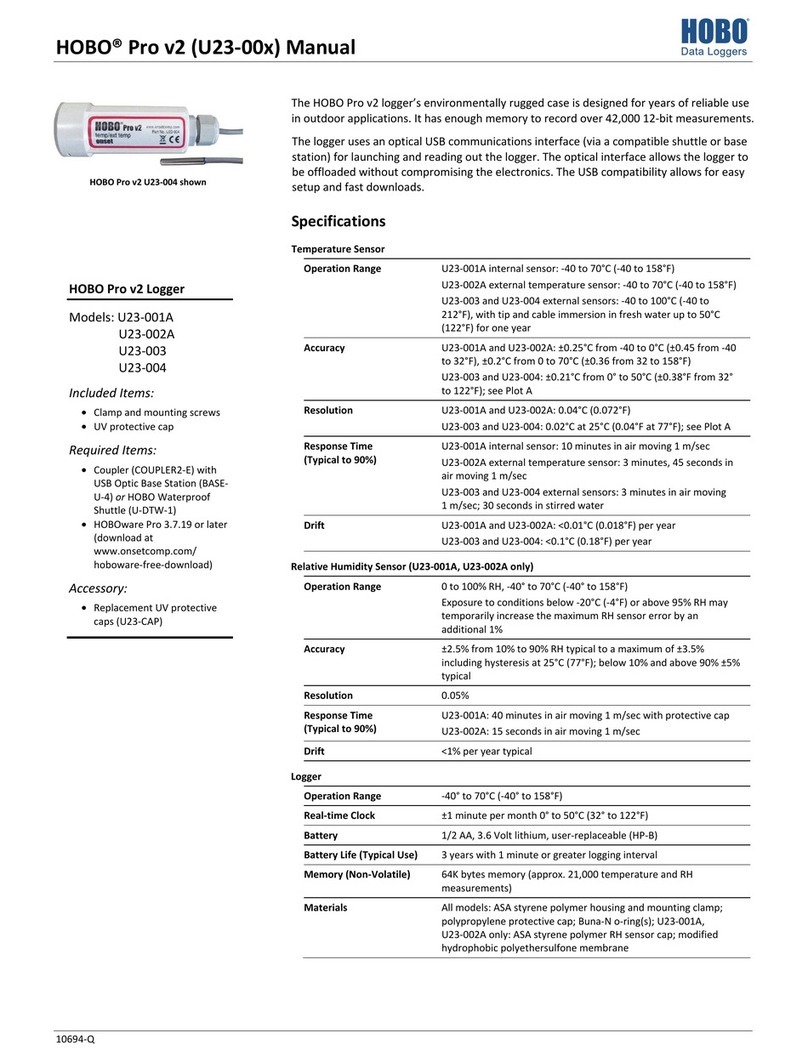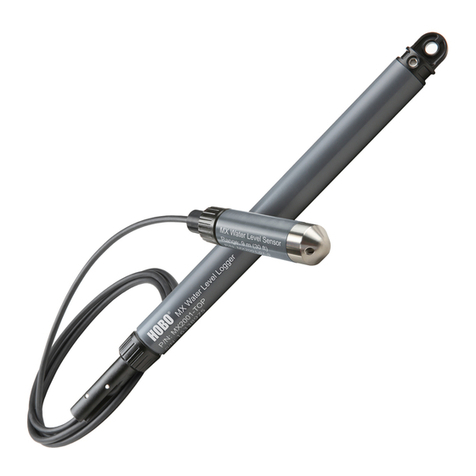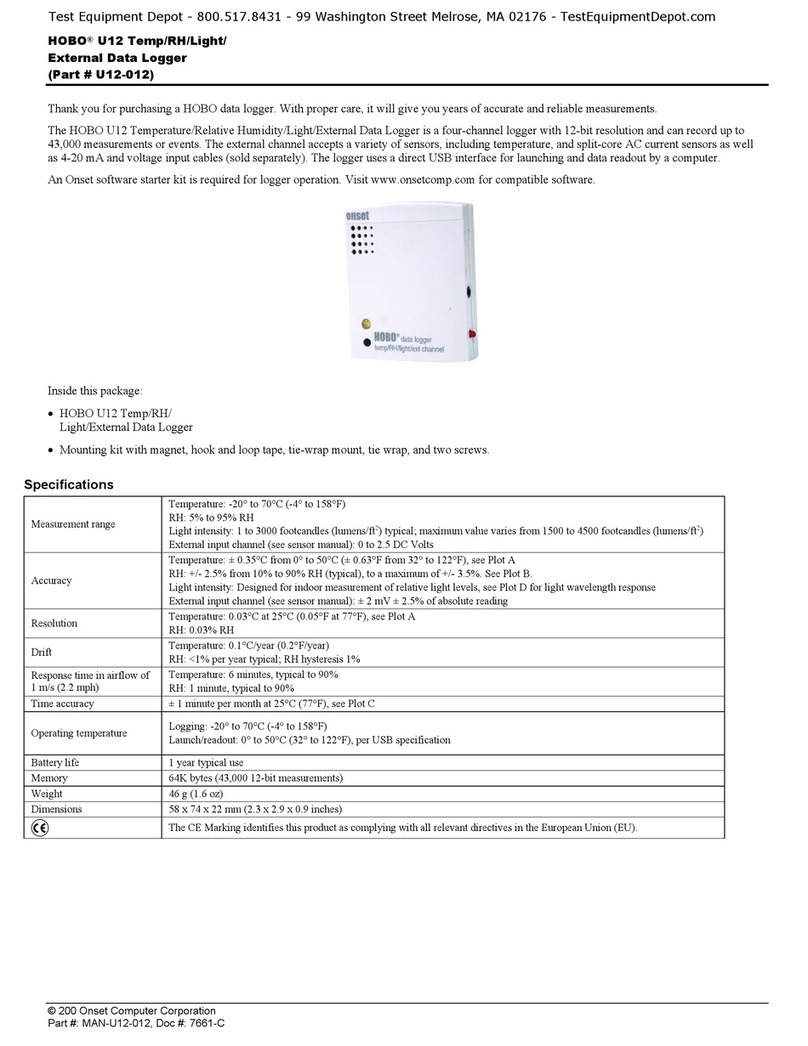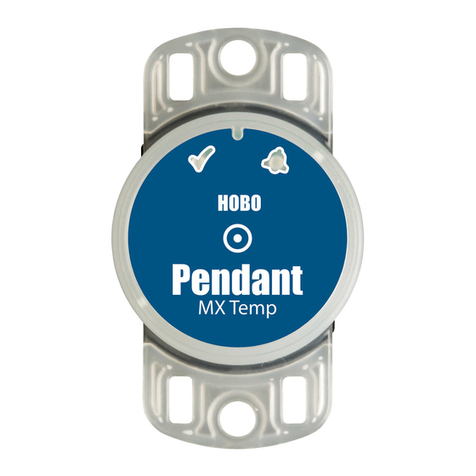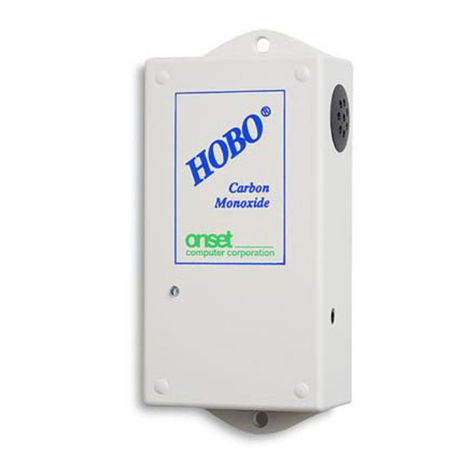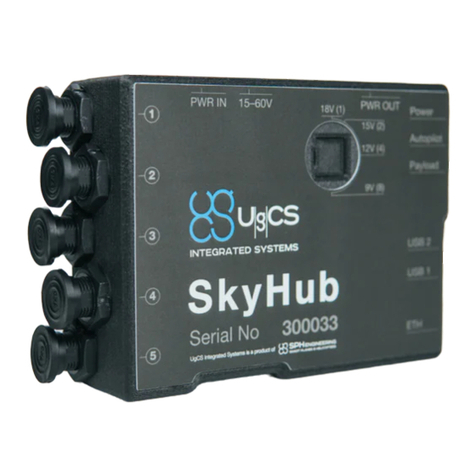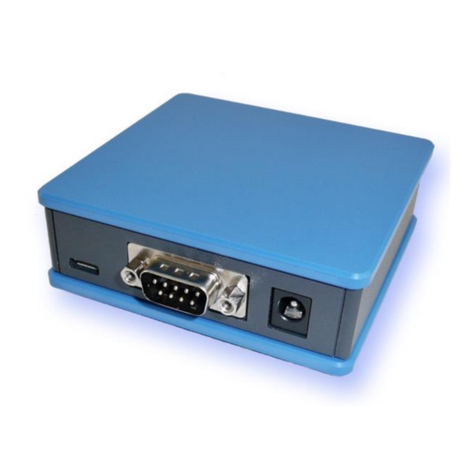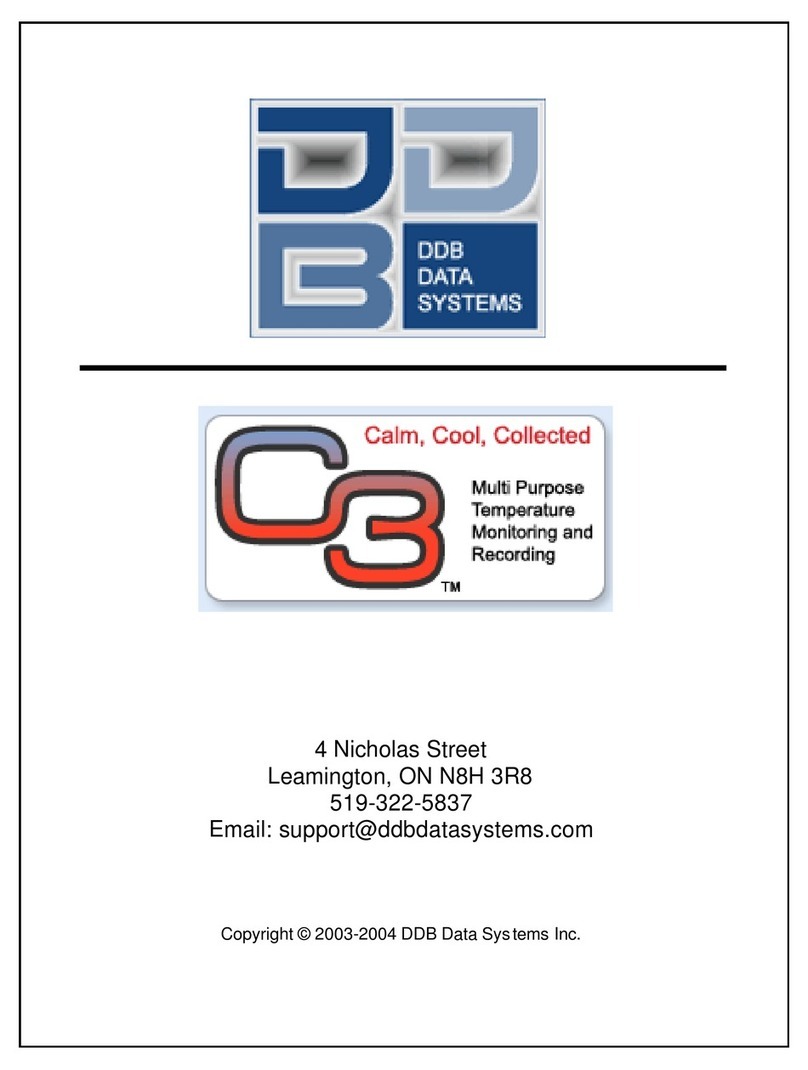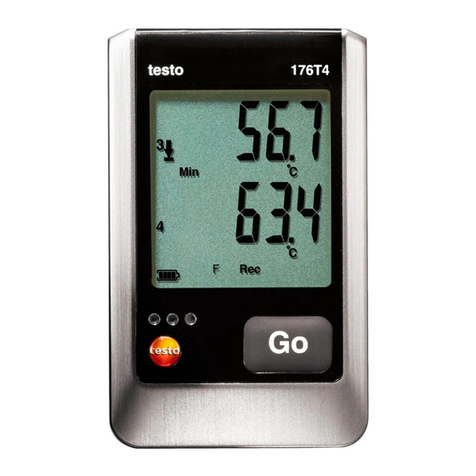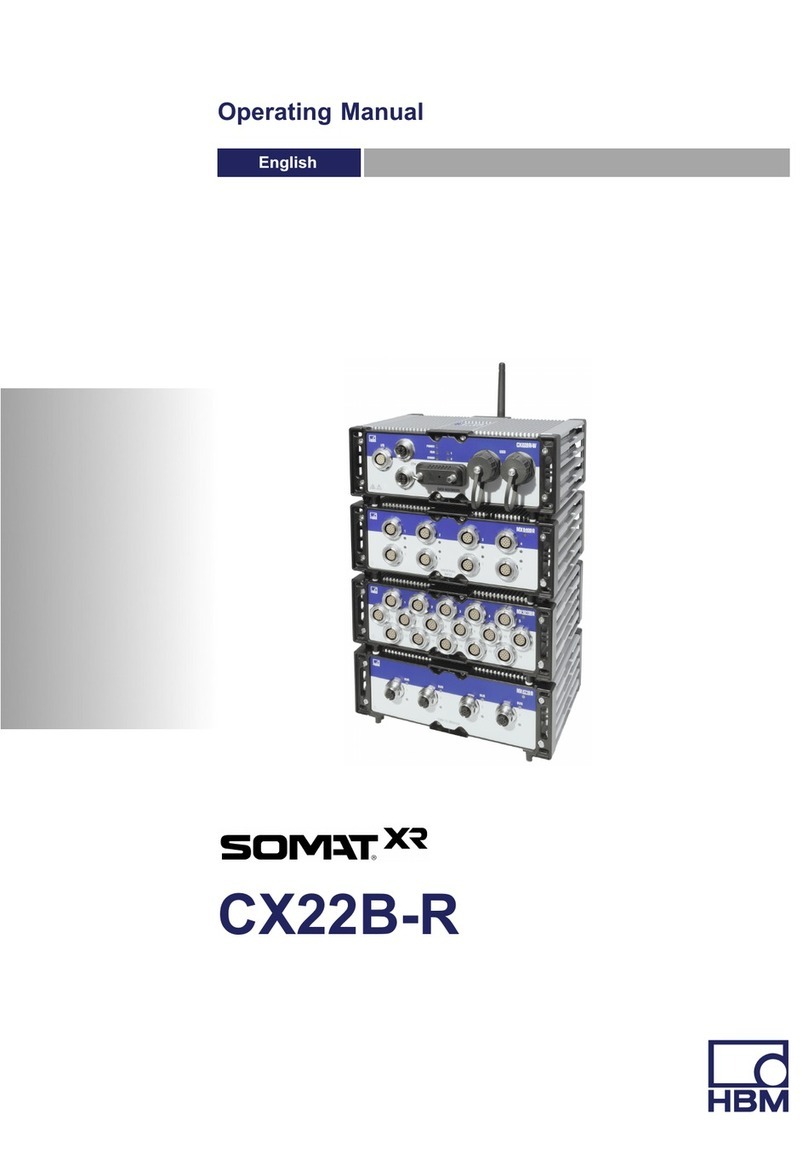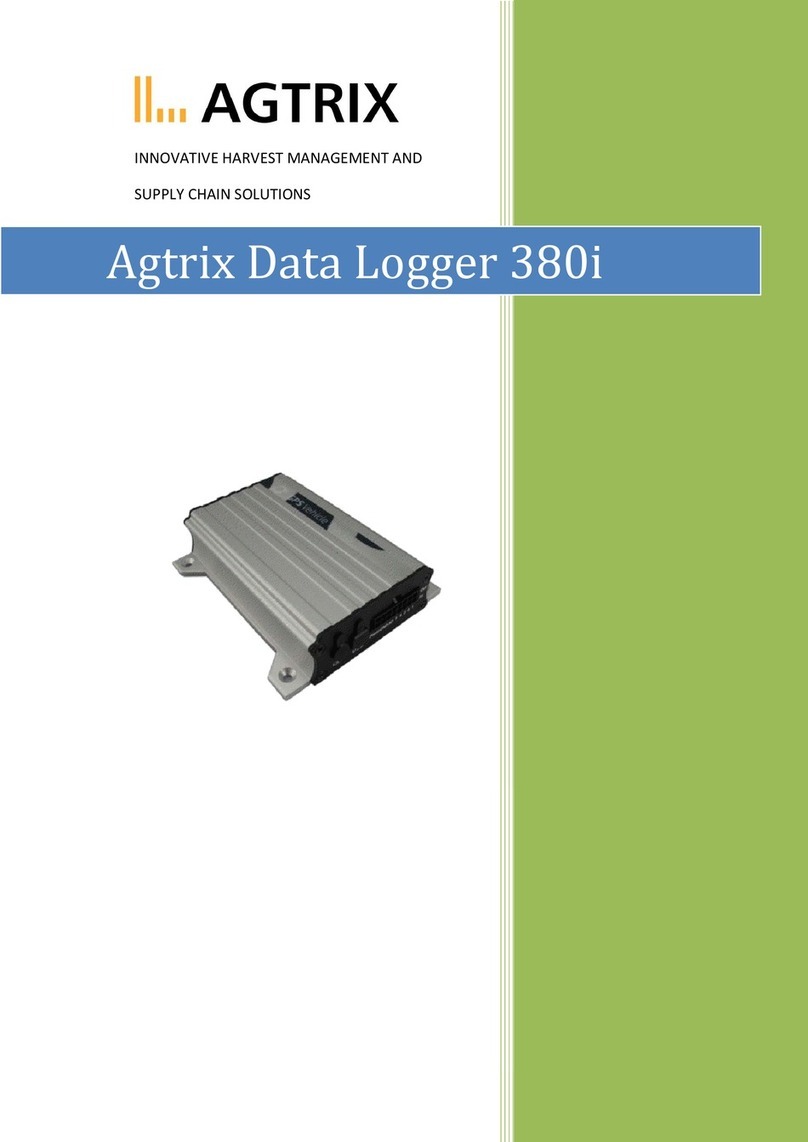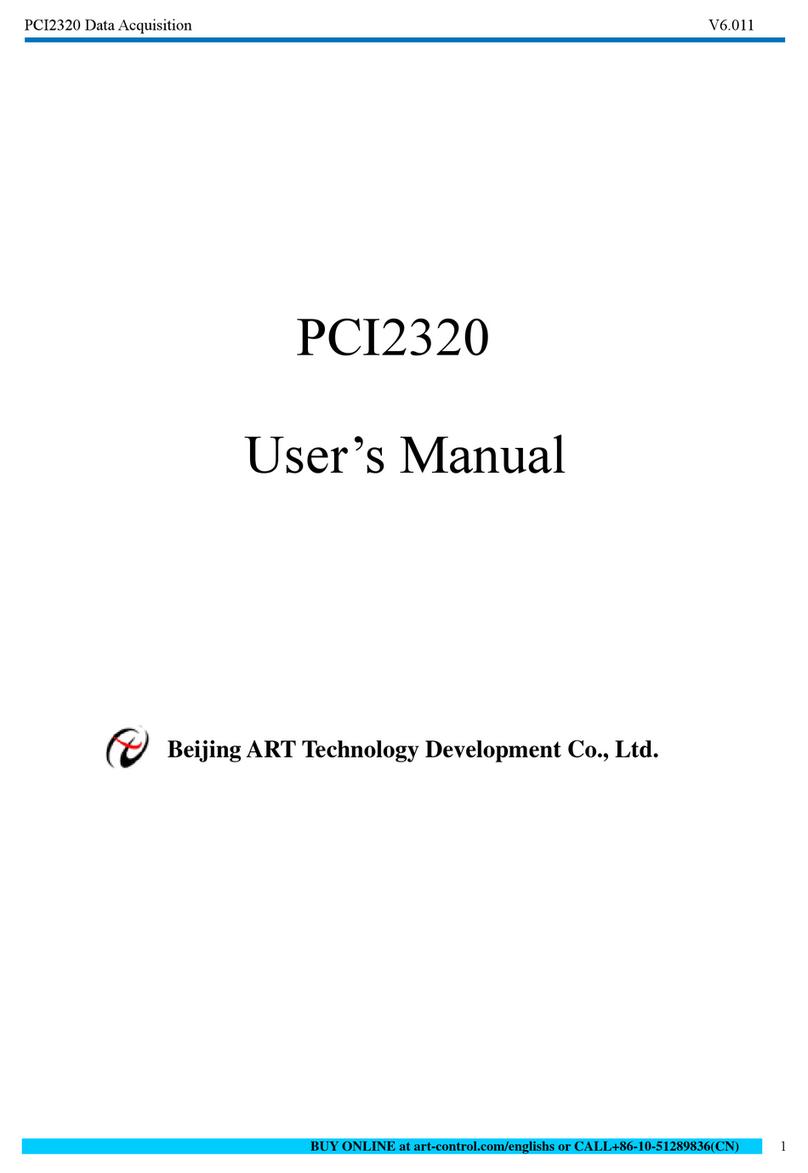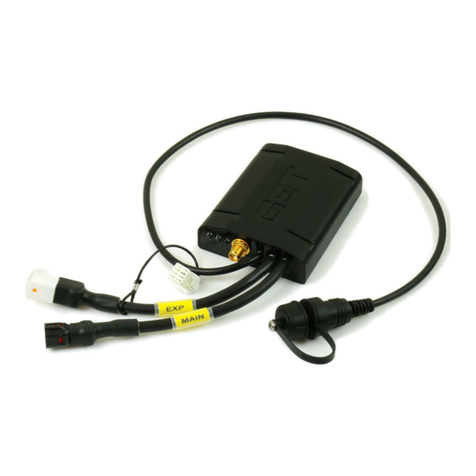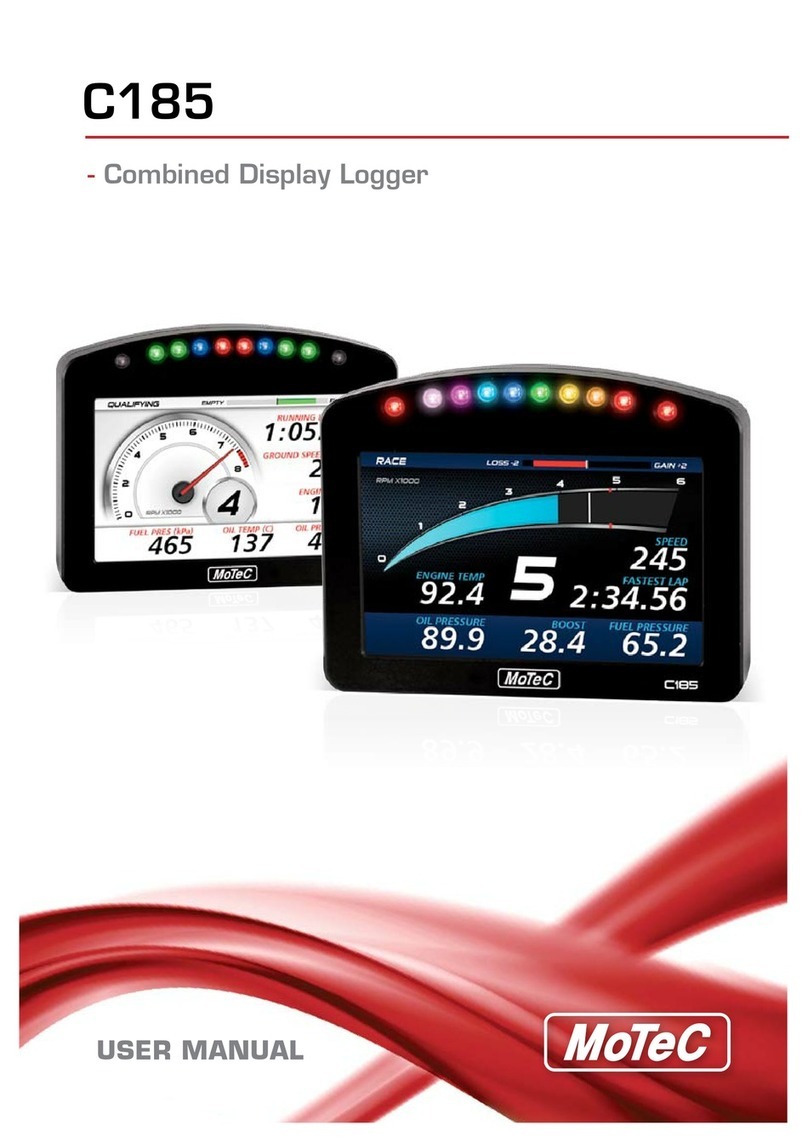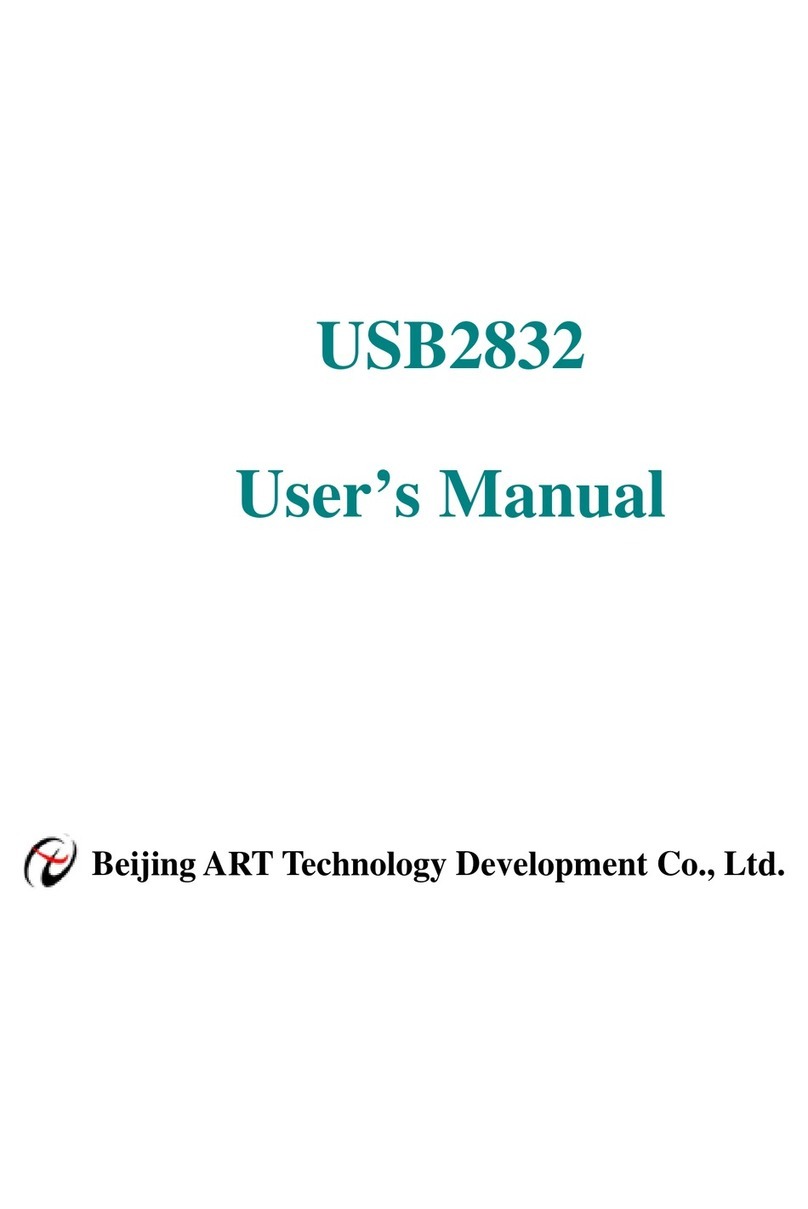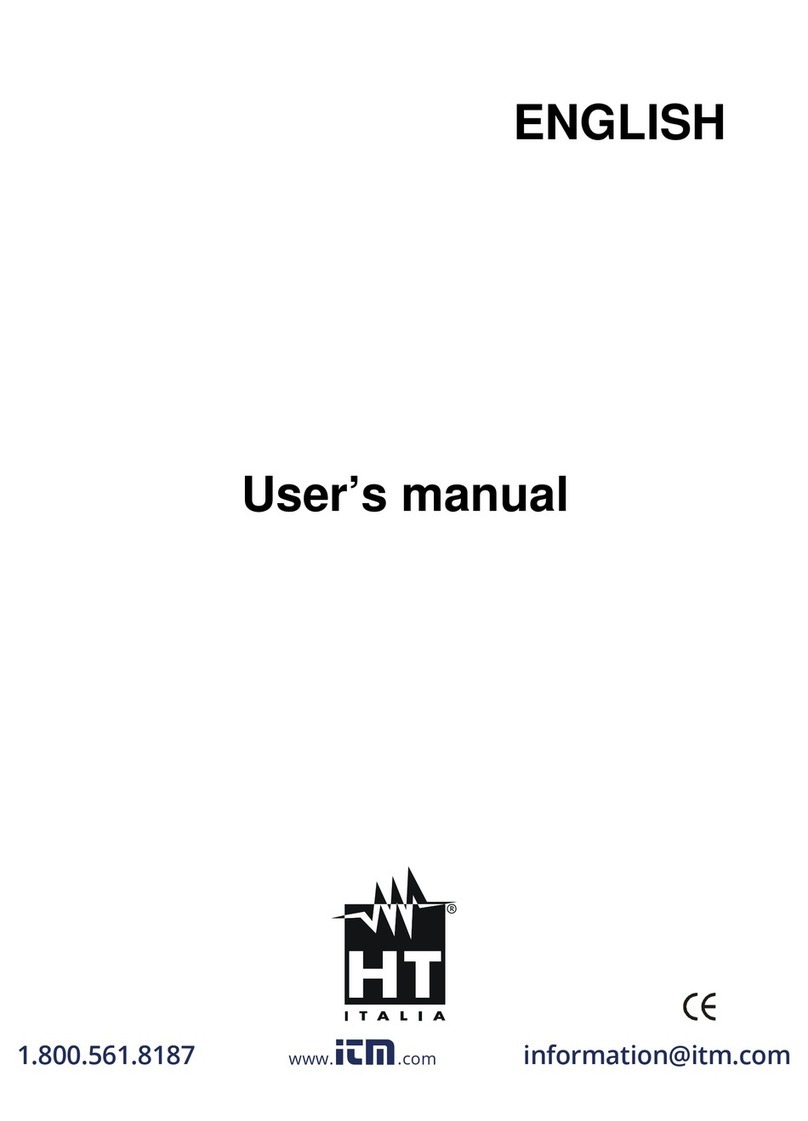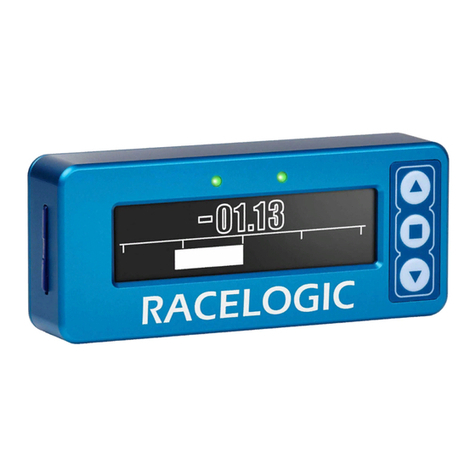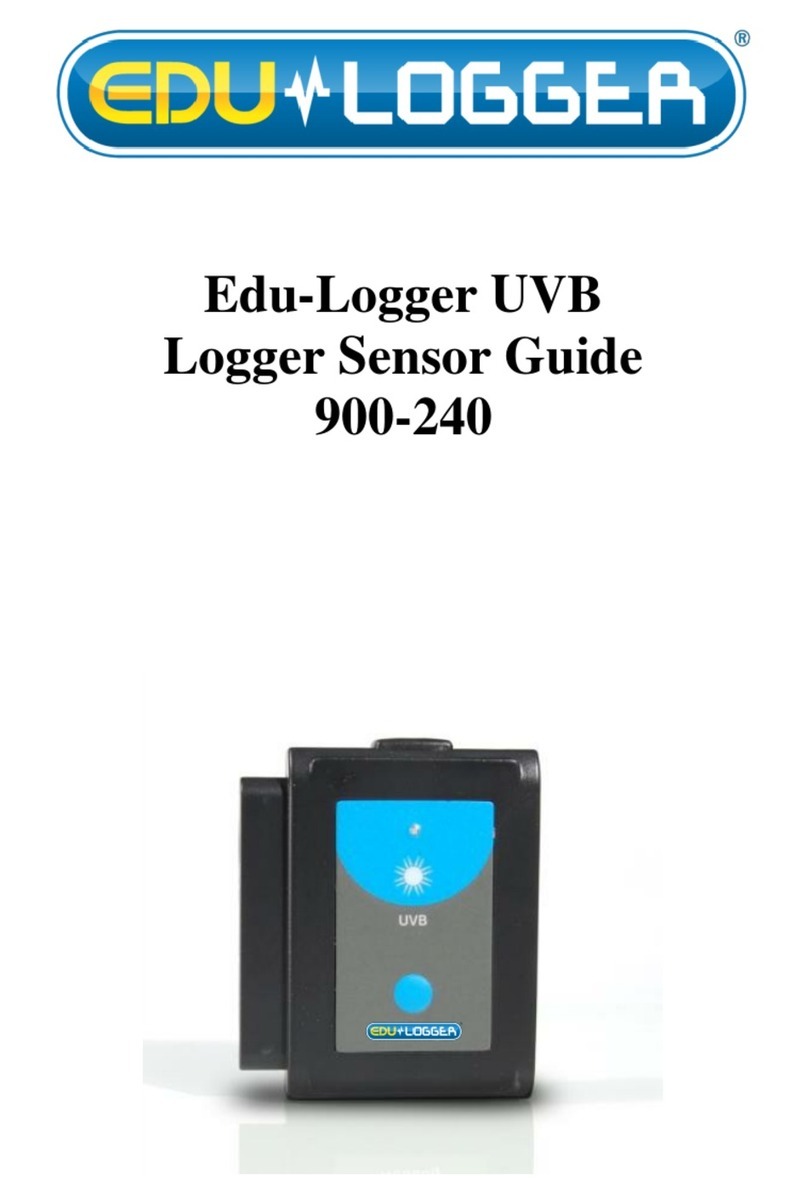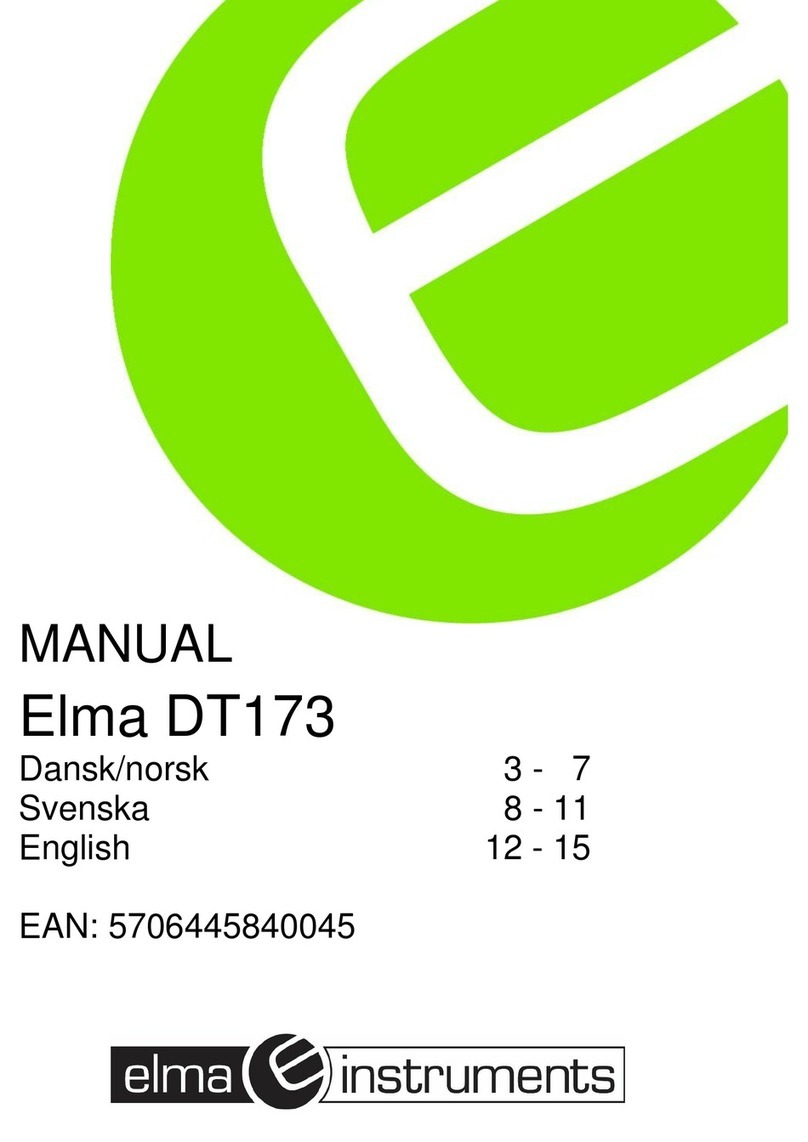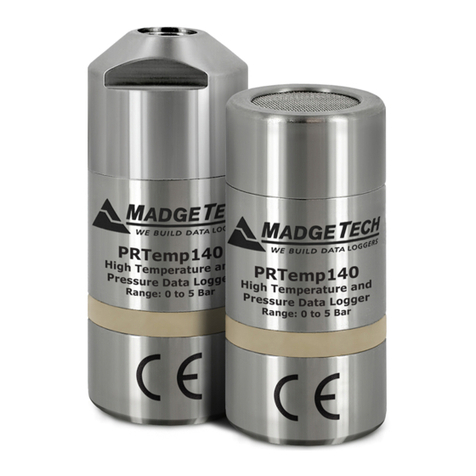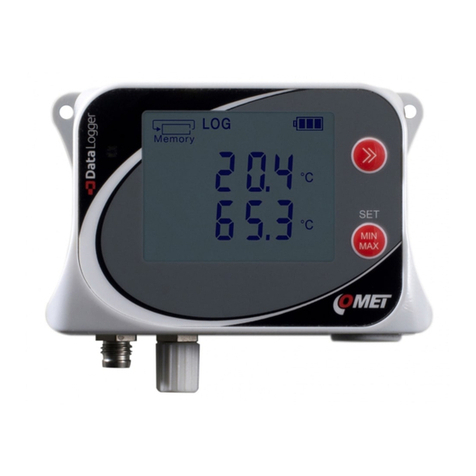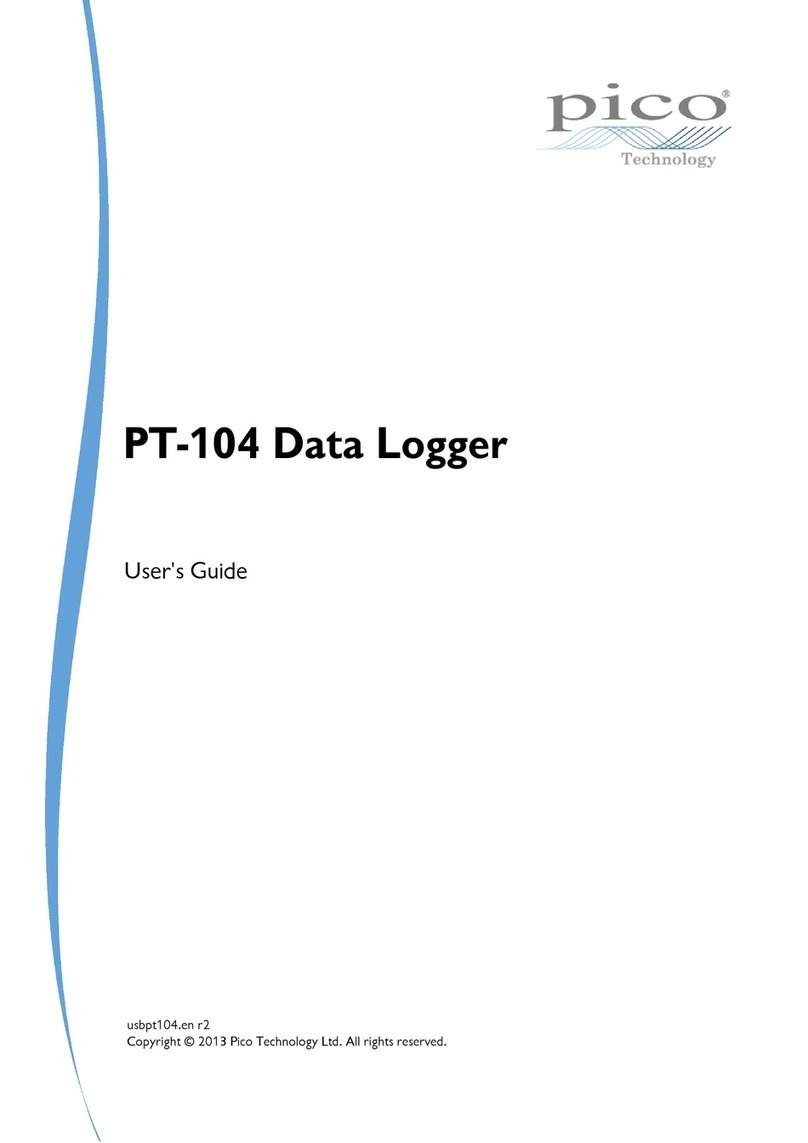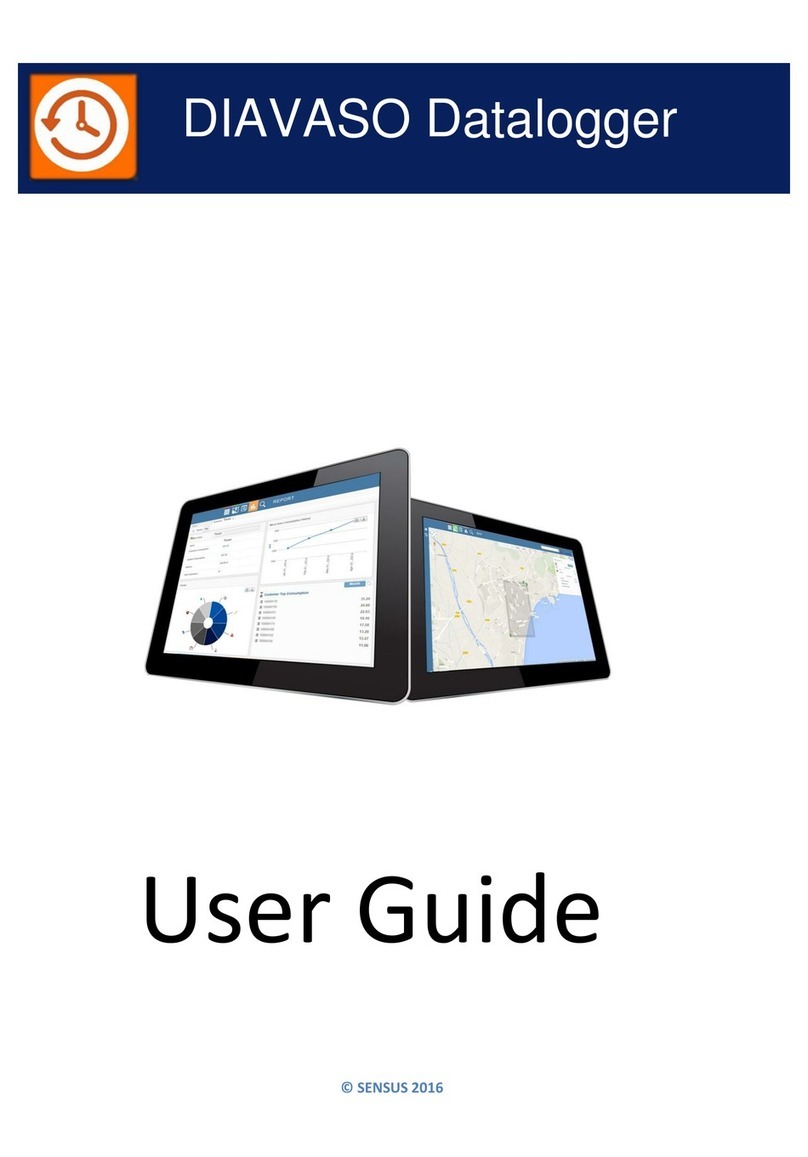
HOBO Pro v2 (U23-00x) Manual
1-800-LOGGERS 3 www.onsetcomp.com
Sample and Event Logging
The logger can record two types of data: samples and events.
Samples are the sensor measurements recorded at each logging
interval (for example, temperature every minute). Events are
independent occurrences triggered by a logger activity, such as
Bad Battery or Host Connected. Events help you determine
what was happening while the logger was logging.
The logger stores 64K of data, and can record over 42,000
12-bit measurements.
Deploying and Protecting the Logger
•To clean the logger’s case, use a sponge
with warm, soapy water.
•Use the included clamp to mount the
logger to a surface. The clamp has two
holes for the screws, 44 mm (1.7
inches) apart.
The clamp is slightly tapered to
accommodate the logger. Install the
clamp so the logger is oriented with the
communication window facing up or to
the side. This will prevent condensation
from pooling on the sensor or cable
grommet.
•A solar radiation shield is required if
the logger with internal sensors or the
external sensors will be in sunlight at
any time.
•The U23-001A logger must be
mounted horizontally. If the U23-
001A logger is being deployed in
a solar radiation shield, it must
be mounted horizontally as
shown in this diagram.
•When deploying a U23-002A
logger, the sensor must be
mounted vertically. If the sensor is
being deployed in a solar radiation
shield, it must be mounted
vertically as shown in this diagram.
•If the logger housing will be in
sunlight, slide the included protective cap over the logger
communication window to protect the window against UV
light.
•When mounting the logger, be sure to attach the logger so
the logger cable is not being pulled. Also leave about 5 cm (2
inch) of drip loop in the cable where it comes out of the
logger (as shown in the above diagrams) to prevent water
from entering the logger housing.
•If there are chewing rodents or other cable hazards present,
the sensor cable should be protected in conduit.
•Periodically inspect the three desiccant packs located in the
logger cap. If they are not bright blue, dry them following the
instructions below.
To dry a desiccant pack, remove it from the logger cap and
leave in a warm (≤70
o
C (158
o
F)), dry location until the bright
blue color is restored. Refer to the Battery section for
instructions on removing and replacing the logger cap.
If a desiccant pack remains pink and will not turn blue,
replace it with a new desiccant pack (DESICCANT1)
•The HUM-RHPCB-x replacement RH sensors are not
compatible with the U23-001A and U23-002A loggers.
Battery
Typical battery life is about three years. Actual battery life is a
function of the number of deployments, logging interval, and
operation/storage temperature of the logger. To obtain a
three-year battery life, use a logging interval of one minute or
greater, and operate and store the logger at temperatures
between 0° and 40°C (32° and 104°F).
Frequent deployments with logging intervals of less than one
minute, and continuous storage/operation at temperatures
above 40°C, will result in significantly lower battery life. For
example, continuous logging at a one-second logging interval
will result in a battery life of approximately one month.
The logger can report and log its own battery voltage. If the
battery falls below 3.1 V, the logger will record a “bad battery”
event in the datafile. If the datafile contains “bad battery”
events, or if logged battery voltage repeatedly falls below 3.3 V,
the battery is failing and should be replaced before the next
deployment. To change the battery:
1. Turn slightly counter-clockwise and pull to remove the
protective cap. Loosen the cable grommet on the opposite
end, if the logger has an external sensor.
2. Carefully pull out the circuit board containing the battery.
(If the logger has an external sensor, you will probably find
it easier to push the cable(s) into the case to push the
circuit board out.)
3. Examine the desiccant packs that were packed into the
case. If the desiccant is not bright blue, put the desiccant
packs in a warm, dry place until the blue color is restored.
4. Install a new 1/2 AA, 3.6 Volt lithium battery (part # HP-B).
The negative end of the battery must face towards the
communication LEDs.
5. Use a clean, dry cloth to wipe away any moisture inside the
case.
Drip Loop
Drip Loop
UV Protective Cap
Communications
window
Circuit board
Cable from sensor (if applicable)
Battery
Desiccant packs
Grommet for cable
(if applicable)
